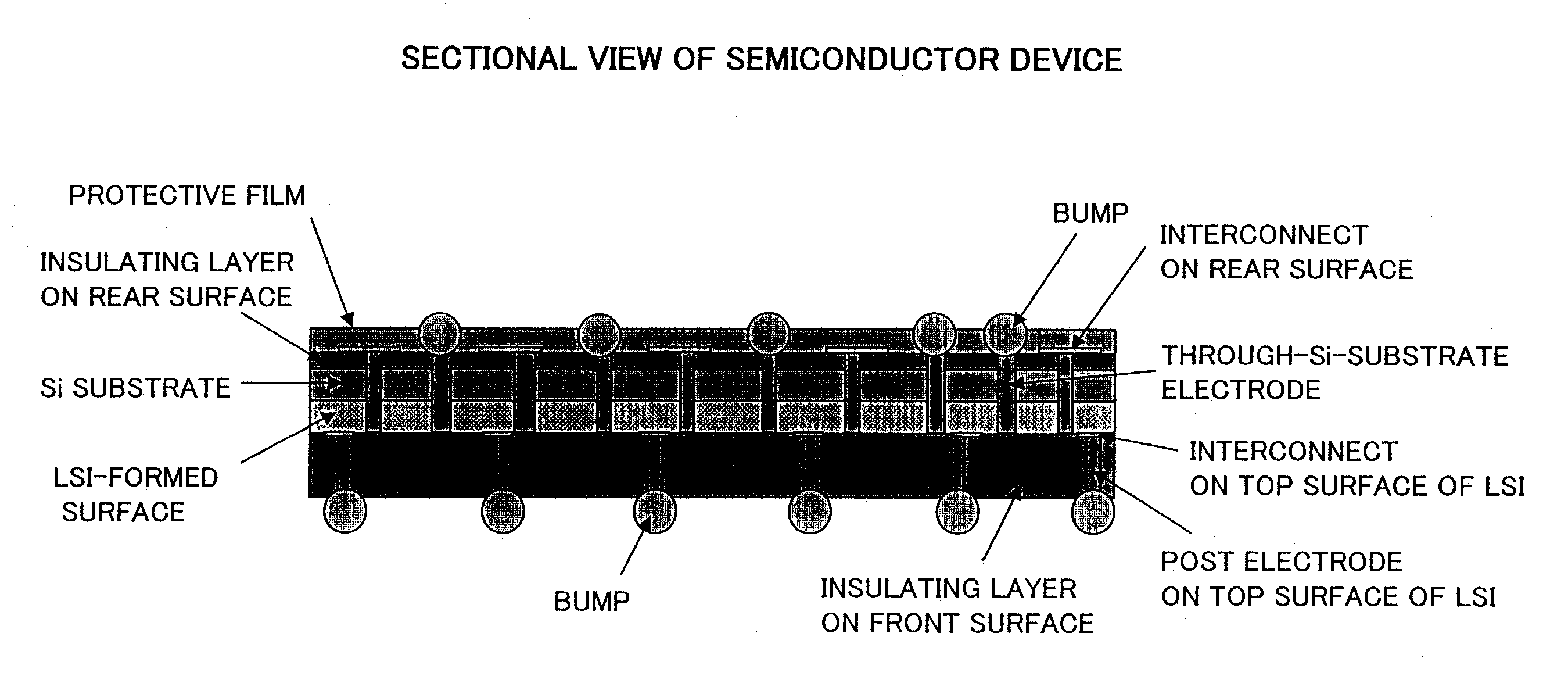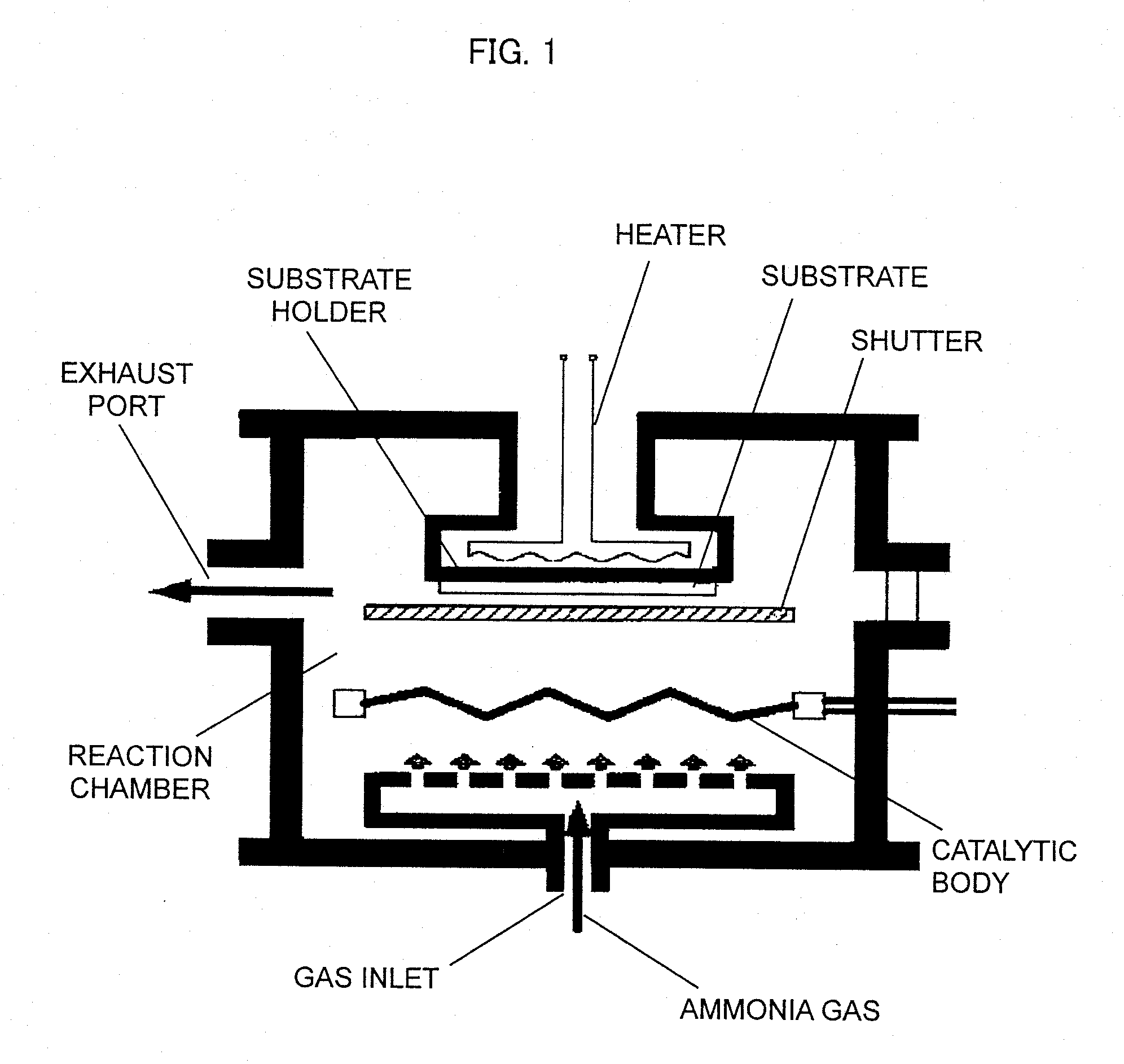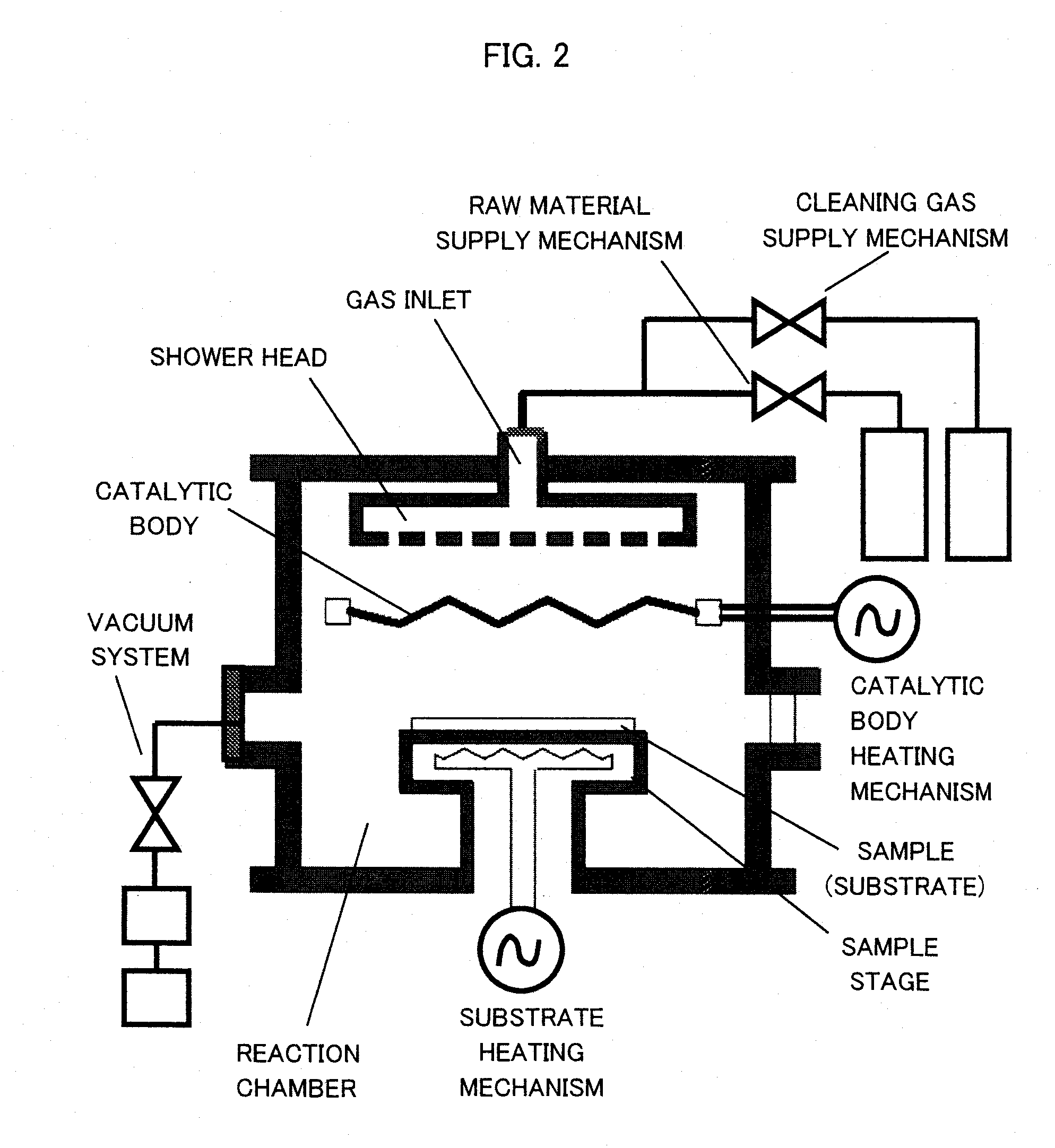Method for processing copper surface, method for forming copper pattern wiring and semiconductor device manufactured using such method
a technology of copper pattern wiring and processing method, which is applied in the direction of solid-state diffusion coating, coating, chemical apparatus and processes, etc., can solve the problems of metal nanoparticles, copper surface is oxidized, and it is difficult to deny the possibility of plasma damage, so as to achieve easy thermal decomposition and removal, clean copper surface, and easy removal
- Summary
- Abstract
- Description
- Claims
- Application Information
AI Technical Summary
Benefits of technology
Problems solved by technology
Method used
Image
Examples
embodiment 1
[0048] By use of the reactor shown in FIG. 1, a silicon LSI wafer in which copper interconnects had been formed by the damascene process was placed as a substrate on the substrate holder. The temperature of the substrate holder was heated to 60° C., the catalytic body of a tungsten wire was heated to 1600° C., and the pressure in the reaction chamber was set at 2.7×10−5 Pa. First, contamination was removed from the silicon LSI wafer in which copper interconnects had been formed by the damascene process and in order to continuously form a protective film of a copper surface, ammonia gas was caused to flow at a flow rate of 50 sccm for 20 minutes, whereby the ammonia gas treatment of the silicon substrate was performed. By this treatment, the removal of the contamination and the formation of a protective film on the copper surface from which the contamination had been removed were performed in order.
[0049]FIG. 3 shows spectra obtained by the X-ray photoelectron spectroscopy (XPS) whe...
embodiment 2
[0052] The above-described silicon LSI substrate on which a copper protective film had been deposited after being allowed to stand was again put into the above-described reaction chamber and subjected to a heat treatment in a vacuum. From the measurement results of the X-ray photoelectron spectroscopy (XPS), it became apparent that when the treatment is performed at 350° C. for 150 minutes, the copper protective film is completely thermally decomposed and removed.
embodiment 3
[0053]FIG. 6 is a diagram which shows an example in which the technique of the present invention for removing contamination due to an organic solvent and oxides is applied to a semiconductor device. In the illustrated semiconductor device, an LSI-formed surface is present on the top surface of an Si substrate. A circuit (a circuit element) is formed on the LSI-formed surface. In the figure, the side where this LSI-formed surface is present is called the top surface side, and the reverse side is called the rear surface side. And the semiconductor device is illustrated, with this top surface side facing downward.
[0054] The semiconductor substrate (Si substrate) having the LSI-formed surface is provided with a through-Si-substrate electrode which connects the top surface side and the rear surface side. On this top surface side (the bottom side in the figure), a multilayer interconnect portion (a interconnect on the top surface of the LSI) is formed on the LSI-formed surface. Furthermo...
PUM
 Login to View More
Login to View More Abstract
Description
Claims
Application Information
 Login to View More
Login to View More - R&D
- Intellectual Property
- Life Sciences
- Materials
- Tech Scout
- Unparalleled Data Quality
- Higher Quality Content
- 60% Fewer Hallucinations
Browse by: Latest US Patents, China's latest patents, Technical Efficacy Thesaurus, Application Domain, Technology Topic, Popular Technical Reports.
© 2025 PatSnap. All rights reserved.Legal|Privacy policy|Modern Slavery Act Transparency Statement|Sitemap|About US| Contact US: help@patsnap.com



